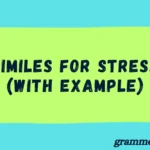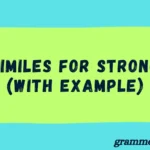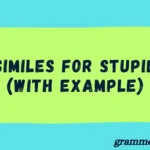Understanding the difference between compare vs contrast is essential for clear communication, critical thinking, and effective writing. These two terms often appear in academic essays, analytical writing, and daily conversations, yet they serve very different purposes. When you compare, you’re identifying similarities between two or more items. When you contrast, you’re focusing on the differences. Whether you’re working on a compare and contrast essay, evaluating two products, or analyzing ideas, knowing how to use these terms correctly helps you organize thoughts logically.
This guide will explain both terms with examples, highlight key differences, and provide useful tips for writing better comparison and contrast paragraphs. We’ll also explore synonyms, historical origins, and practical uses—making this a complete resource for mastering these important concepts.
Understanding the Basics
Definition of “Compare”
To compare means to look at similarities. You’re examining how two or more things are alike in traits, qualities, or functions.
Example:
“Compare apples and oranges.”
You might say: Both are fruits, sweet in taste, round, and grow on trees.
Definition of “Contrast”
To contrast means to focus on differences. You’re identifying what makes each subject unique or opposite.
Example:
“Contrast apples and oranges.”
Now you’ll say: Apples have smooth skin, oranges are bumpy. Apples are often red or green, oranges—obviously—are orange.
Key Differences Between Compare and Contrast
Purpose
- Compare is used to highlight what’s common.
- Contrast aims to show how things differ.
Focus
- Comparing looks at shared characteristics.
- Contrasting looks at opposing traits.
Outcome
- Comparison often leads to grouping or finding overlap.
- Contrast leads to distinguishing or choosing between options.
Common Contexts in Use
| Context | Compare | Contrast |
| Education | Essay similarities | Essay differences |
| Marketing | Product similarities | Unique selling points |
| Everyday talk | “These shoes are just like those” | “These are way more comfortable” |
When to Use Compare vs Contrast
Academic Settings
In school, teachers often ask students to compare and contrast characters, historical events, or scientific processes to boost analytical skills.
Business and Marketing
Marketers use both:
- Compare to show what their product shares with competitors.
- Contrast to highlight advantages or unique features.
Everyday Communication
From dating advice to buying a car, we naturally use both:
- “This car is like that one in size (compare)… but this one has better mileage (contrast).”
Examples to Illustrate the Differences
Example 1 – Comparing and Contrasting Fruits
- Compare: Apples and bananas are fruits, contain fiber, and are eaten raw.
- Contrast: Apples are crunchy and come in multiple colors. Bananas are soft and always yellow when ripe.
Example 2 – Historical Figures
- Compare: Lincoln and Kennedy were both U.S. Presidents, served during times of social unrest, and were assassinated.
- Contrast: Lincoln led during the Civil War; Kennedy during the Cold War. Lincoln was a self-taught lawyer; Kennedy had formal education at Harvard.
Example 3 – Products in Marketing
- Compare: Two smartphones both offer OLED displays and 5G.
- Contrast: One has better battery life; the other excels in camera performance.
Example 4 – Literature Analysis
- Compare: Romeo and Juliet both suffer from forbidden love.
- Contrast: Romeo acts impulsively; Juliet shows more strategic thinking.
How to Compare and Contrast Effectively
Use of Venn Diagrams
Venn diagrams are great for visualizing similarities and differences. Shared traits go in the overlapping space, while differences sit in the separate circles.
Structuring Your Thoughts
- Start with an intro paragraph.
- Then one body paragraph for similarities, one for differences.
- Finish with a conclusion summarizing your insights.
Choosing the Right Language
Use specific, clear wording. Don’t say, “they’re kinda similar.” Be precise: “Both are powered by lithium-ion batteries.”
Common Phrases and Transition Words
Phrases for Comparison
- Similarly
- Just like
- In the same way
- Both
- Likewise
Phrases for Contrast
- However
- On the other hand
- In contrast
- Whereas
- Unlike
Mistakes to Avoid
Mixing Up the Two
Saying something is “different” when you meant “similar” confuses readers or listeners. Stay clear on your intent.
Overloading with Irrelevant Info
Stick to core similarities or differences. Avoid throwing in facts that don’t help the comparison or contrast.
Ignoring Purpose
Know why you’re comparing or contrasting. Is it to decide? Inform? Persuade? That purpose should guide your focus.
Teaching Compare and Contrast to Students
Interactive Classroom Activities
- Use card matching games for similarities and differences.
- Have students build Venn diagrams for fun topics like superheroes or snacks.
Simple Writing Exercises
Start with pairs like:
- Dogs vs Cats
- Summer vs Winter
- Books vs Movies
Then guide them to write short compare and contrast paragraphs.
Benefits of Mastering Compare and Contrast Skills
Improved Critical Thinking
Being able to analyze and differentiate helps in everything from exams to job decisions.
Better Communication
You explain things clearly, back up choices with logic, and make compelling arguments.
Conclusion
Knowing when to compare and when to contrast isn’t just about grammar—it’s about thinking with clarity and intention. When you compare, you draw connections and spot similarities. When you contrast, you highlight differences that help define choices, opinions, or concepts.
Whether you’re writing an essay, analyzing products, or making decisions in daily life, using compare vs contrast correctly sharpens your reasoning. It improves your ability to communicate ideas with precision, structure, and logic.
By understanding their definitions, differences, usage methods, and real-life applications, you’ll not only boost your writing but also your ability to make smarter, more informed decisions.
FAQs
1. Can I compare and contrast in the same sentence?
Yes! You can say, “Both phones have 5G (compare), but one has a better camera (contrast).”
2. Are compare and contrast only used in writing?
No. They’re used in speaking, thinking, decision-making, and more.
3. What’s a good trick to remember the difference?
Think: Compare = Common, Contrast = Clear Differences.
4. Can I use a Venn diagram for complex ideas?
Absolutely. Venn diagrams work well for both simple and complex topics.
5. Why is compare and contrast important in education?
It sharpens critical thinking, improves comprehension, and helps students see connections and make distinctions.

Emma-Brooke is the passionate voice behind GrammerHome.com, where she simplifies English grammar for learners across the globe. With a deep love for language and years of experience in grammar instruction, Emma specializes in breaking down complex rules into clear, easy-to-understand tips.




